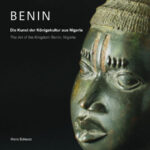Beschreibung
Das hohe Niveau der Kunstfertigkeit in Afghanistan im 3. und 2. Jahrtausend vor unserer Zeitrechnung belegen die Kompositfiguren aus den Gräbern Baktriens, die im Pariser Louvre als “Prinzessinnen” betitelt werden. Die kleinen Bildwerke stellen sitzende Frauen dar, deren Körper aus dunklem Serpentin, deren Köpfe jedoch aus weißem Kalkstein bestehen. Die Publikation schafft einen Einblick in die beiden Hochkulturen Baktriens und des Industals. Die Kultur des Industales ist neben Ägypten und Mesopotamien die dritte bedeutende frühe Flusshochkultur. Der Bildband stellt neben den “Prinzessinnen” Baktriens und Skulpturen aus dem Industal auch Kunstgegenstände der Nal-Kultur vor.
Composite sculptures found in Bactrian burial sites show the high level of artistry in Afghanistan in the 3rd and 2nd millennium BC. These artifacts represent sitting women and are labelled “Bactrian Princesses” in the Louvre Museum in Paris. The lower part of each sculpture is made of dark serpentine while the upper body and the head consist of white limestone. This publication gives an insight into the two ancient civilizations of Bactria and the Indus River Valley, the third most important river civilization besides Egypt and Mesopotamia. The volume presents Bactrian Princesses, sculptures from the Indus River Valley Civilization and artifacts from the Nal Culture.
Das alte Königreich Benin in den Regenwäldern von Südnigeria ist das treffendste Beispiel des Prunks der afrikanischen Königshöfe. Der Kunsthistoriker Felix von Luschan schrieb bereits 1899 über diese Bronzegüsse: “Benvenuto Cellini hätte nicht besser gießen können, diese Bronzen stehen technisch auf der höchsten Stufe des überhaupt Erreichbaren.”
The former Kingdom of Benin in the rainforests of southern Nigeria is a good example of the splendour at past African Royal Courts. Art historian Felix von Luschan described the bronze castings as early as 1899: “Benvenuti Cellini could not have cast better! These artifacts are of the highest technical level achievable.”


